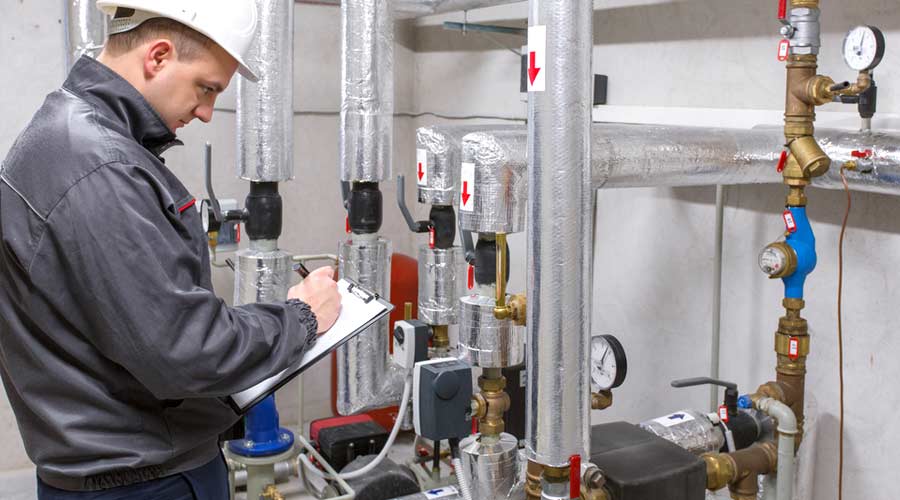The American Society for Health Care Engineering 2022 Hospital Construction Survey included responses from 381 hospital facility professionals across the country. Data drawn from the survey highlights areas of improvement for upcoming budgets and showcases the types of construction projects being funded by healthcare facilities.
Two years after the start of the COVID-19 pandemic, the survey shows a renewed focus on preventive maintenance and budget trends favoring renovation and upgrades over new construction.
Preventive maintenance
The 2022 Hospital Construction Survey found that most organizations that completed an emergency repair project after deferring maintenance reported paying 18 percent more when compared to the original deferred project cost estimate. While funding minor repairs to correct faulty infrastructure such as leaking pipes, cracking foundations and damaged insulation might consume larger portions of facility budgets initially, organizations will incur lower lifecycle costs over time to sustain older infrastructures.
Healthcare facility managers can lower or even avoid the high cost of quick emergency responses by following a facility-specific program for operations and maintenance of key components, such as HVAC maintenance, mold and moisture control, environmental hygiene and water safety. Facilities with written operation and maintenance programs already have a resource in place to train staff on proper work practices, maintenance and inspection checklists, safety protocols, and response actions. Ensuring implementation of these programs remains key.
Renovations and upgrades over new construction
The survey reaffirms that numerous facilities are focused on preventive maintenance, as many facility budgets in 2022 are allocated toward infrastructure upgrades and renovations. Budgeted funds for new hospital construction have decreased while funds for renovations, infrastructure upgrades and off-site facilities have increased.
Data shows the most common facility projects that are ongoing or planned in the next 12 months include upgrades to air handlers and ventilation, followed by plumbing fixtures and piping, packaged HVAC, and exhaust fans. Common upgrades planned in the next 13-24 months include electrical switchgear and transformers, chillers, air handlers and ventilation, and boilers. The COVID-19 pandemic has motivated many facilities to improve air filtration and ventilation, which also creates the advantage of meeting sustainability goals for some buildings, such as increased HVAC system efficiency.
Although not increasing in frequency, several hospital construction projects with price tags of $500 million or more have been recently announced or are in progress, including the $4.3 billion approval for the University of California San Francisco hospital at Helen Diller Medical Center. On the East Coast, New Jersey’s University Hospital is in dire need of improvements as it deals with overcrowding and ongoing maintenance issues. The state’s only public hospital reports spending $20 million in emergency repairs every year and is seeking $1.2 billion for a replacement facility.
Projects following best practices
In addition to projects being scheduled proactively to prevent emergency actions, facility managers are ensuring that projects are commissioned and that contractors performing the work are certified. The survey showed that for projects in 2022, 80 percent of healthcare facilities commission facility projects and 47 percent of organizations require certified contractors.
Projects that are commissioned use a multidisciplinary team to check, inspect and test every operational component of the project, from individual building materials and equipment to occupant concerns and life safety measures. Contractors are deemed certified if they have had training on health and safety regulations, as well as on industry standards in accordance with the Association for Professionals in Infection Control and Epidemiology, U.S. Centers for Disease Control & Prevention, and Facility Guidelines Institute guidelines regarding industry best practices during renovations in healthcare facilities.
The 2022 survey recognizes the value of maintenance staff not only to identify minor building problems before they turn into costly emergency repairs but for input in construction and renovation design. It also gives us a glimpse into the types of projects budgeted for the upcoming three years, which indicates specialty hospital projects, including behavioral health centers, cancer treatment, orthopedic, and rehabilitation hospitals, are a priority for the healthcare industry. This year’s survey validates that while new construction remains a focus, facilities are prioritizing their budgets to improve infrastructure and complete facility renovation upgrades in a manner that continues to ensure staff, occupants and the indoor environment are protected.
Shari L. Solomon, Esq., is president and founder of CleanHealth Environmental, LLC. CleanHealth provides infection prevention and industrial hygiene training and consulting services geared toward facility personnel and vendors responsible for infection prevention, cleaning and disinfection, and facility operations and maintenance practices. Solomon has more than 20 years of environmental consulting and federal regulatory experience. An attorney by trade, combined with her experience in the industrial hygiene field with a focus on healthcare, Solomon holds a unique expertise and understanding of liability prevention techniques, offering clients practical and valuable risk management solutions.

 How Healthcare Facilities Can Be Truly Disaster-Resilient
How Healthcare Facilities Can Be Truly Disaster-Resilient TriasMD Breaks Ground on DISC Surgery Center for San Fernando Valley
TriasMD Breaks Ground on DISC Surgery Center for San Fernando Valley Bigfork Valley Hospital Falls Victim to Data Breach
Bigfork Valley Hospital Falls Victim to Data Breach AI-Driven Facilities: Strategic Planning and Cost Management
AI-Driven Facilities: Strategic Planning and Cost Management  Double Homicide Suspect Hides from Police in Upstate Community Hospital
Double Homicide Suspect Hides from Police in Upstate Community Hospital